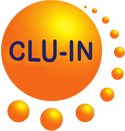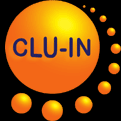Search Result
APPLICATION OF PERSULFATE-OXIDATION FOAM SPRAYING AS A BIOREMEDIATION PRETREATMENT FOR DIESEL OIL-CONTAMINATED SOIL
Bajagain, R., S. Lee, and S.-W. Jeong.
Chemosphere 207:565-572(2018)
Filed Under: Research
Filed Under: Research
A persulfate-bioaugmentation serial foam-spraying technique was investigated for removing total petroleum hydrocarbons (TPHs) present in diesel-contaminated unsaturated soil. Feeding of remedial agents by foam spraying increased the infiltration/unsaturated hydraulic conductivity of reagents into the unsaturated soil. Persulfate mixed with a surfactant solution infiltrated the soil faster than peroxide, resulting in relatively even soil moisture content. Persulfate had a higher soil infiltration tendency, which would facilitate its distribution over a wide soil area, thereby enhancing subsequent biodegradation efficiency. Combined persulfate-bioaugmentation foam spraying degraded nearly 80% of soil TPH, whereas bioaugmentation foam spraying alone removed 52%. TPH fraction analysis revealed that the removal rate for the biodegradation-recalcitrant fraction (C18 to C22) in deeper soil regions was higher for persulfate-bioaugmentation serial foam application than for peroxide-bioaugmentation foam application. Even at a low concentration, persulfate-foam spraying may be more effective than peroxide for TPH removal because persulfate-foam is more permeable and persistent and does not change soil pH in the subsurface.
Chemosphere 207:565-572(2018)
Filed Under: Research
Filed Under: Research
A persulfate-bioaugmentation serial foam-spraying technique was investigated for removing total petroleum hydrocarbons (TPHs) present in diesel-contaminated unsaturated soil. Feeding of remedial agents by foam spraying increased the infiltration/unsaturated hydraulic conductivity of reagents into the unsaturated soil. Persulfate mixed with a surfactant solution infiltrated the soil faster than peroxide, resulting in relatively even soil moisture content. Persulfate had a higher soil infiltration tendency, which would facilitate its distribution over a wide soil area, thereby enhancing subsequent biodegradation efficiency. Combined persulfate-bioaugmentation foam spraying degraded nearly 80% of soil TPH, whereas bioaugmentation foam spraying alone removed 52%. TPH fraction analysis revealed that the removal rate for the biodegradation-recalcitrant fraction (C18 to C22) in deeper soil regions was higher for persulfate-bioaugmentation serial foam application than for peroxide-bioaugmentation foam application. Even at a low concentration, persulfate-foam spraying may be more effective than peroxide for TPH removal because persulfate-foam is more permeable and persistent and does not change soil pH in the subsurface.
The Technology Innovation News Survey welcomes your comments and
suggestions, as well as information about errors for correction. Please
contact Michael Adam of the U.S. EPA Office of Superfund Remediation
and Technology Innovation at adam.michael@epa.gov or (703) 603-9915
with any comments, suggestions, or corrections.
Mention of non-EPA documents, presentations, or papers does not constitute a U.S. EPA endorsement of their contents, only an acknowledgment that they exist and may be relevant to the Technology Innovation News Survey audience.





